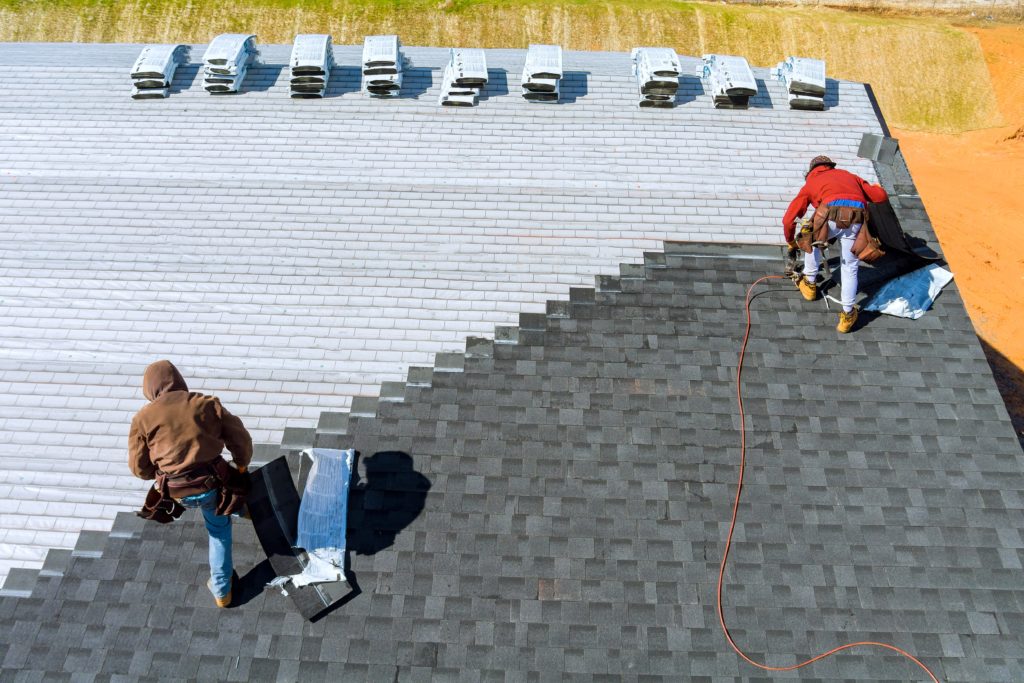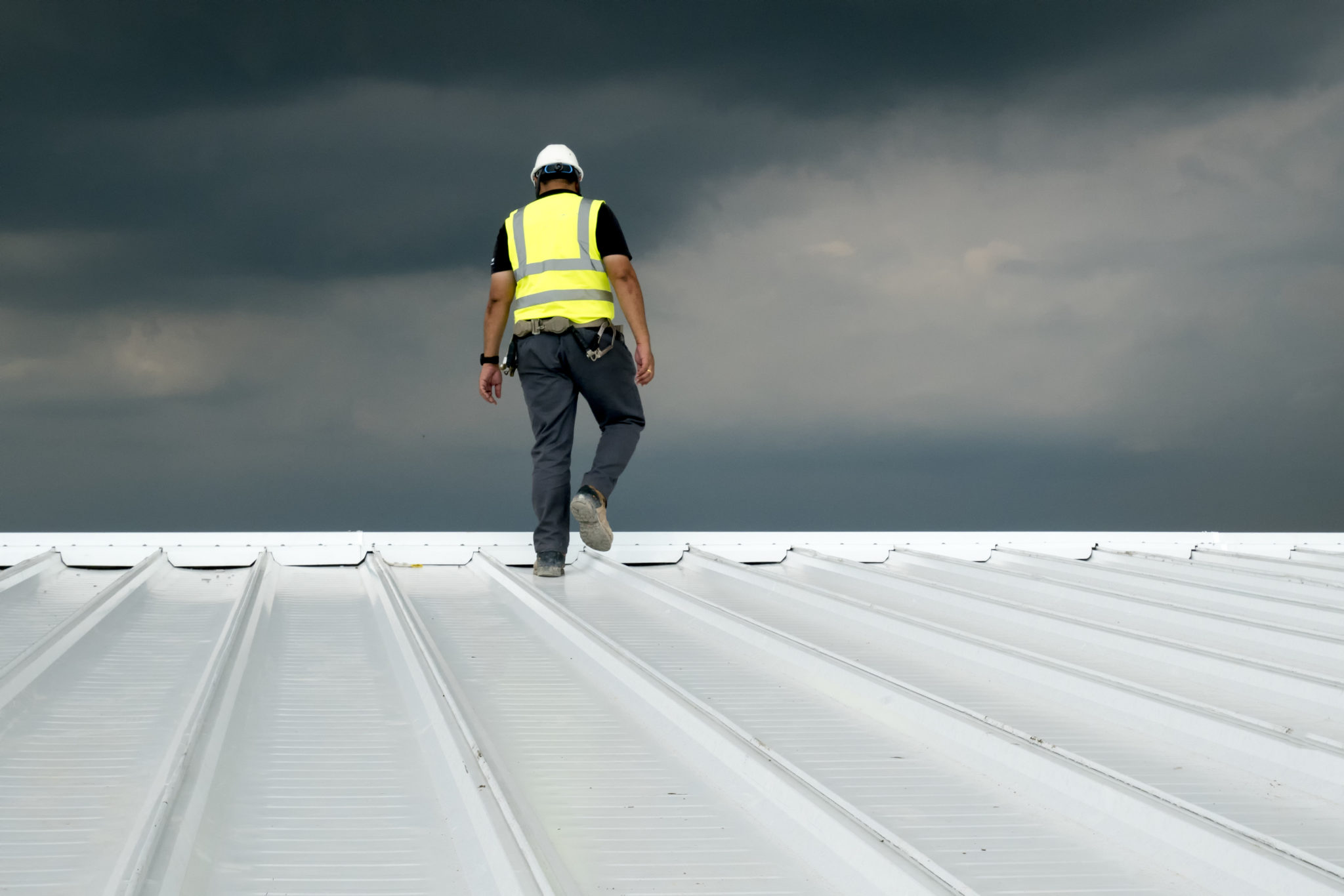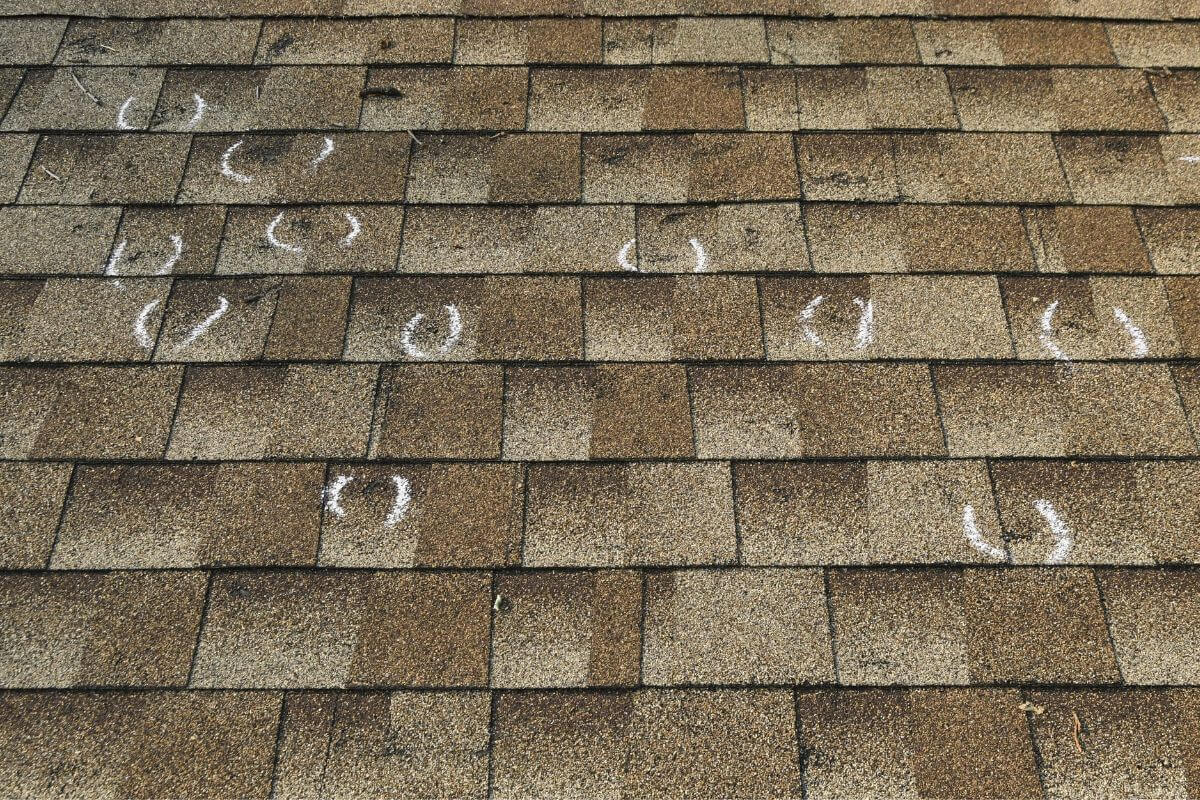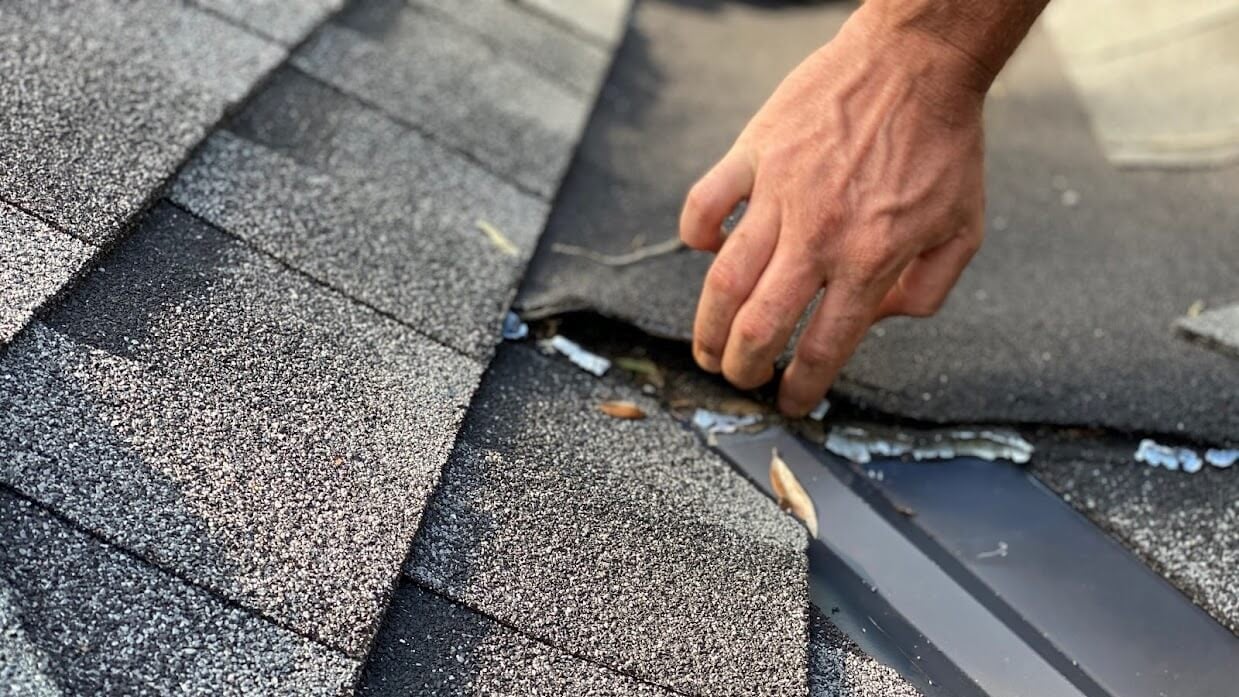When deciding between a flat roof and a shingle roof for your home or commercial building, one of the most common questions that arises is: “Will a flat roof last longer than a shingle roof?”
It’s not a simple answer, since different roofing materials, quality of installation, and regular roof maintenance play a big part.
Quality flat roofs and shingle roofs each have their pros and cons in terms of the length of time that they will last. Flat roofs, mostly using roofing materials such as EPDM, TPO, or modified bitumen, will last anywhere from 15 to 30 years. However, they need to be closely cared for to avoid water pooling and other problems that can reduce their life span.
Alternatively, shingle roofs, particularly asphalt shingle roofs, are a more classic choice for residential roofs and have a lifespan ranging anywhere from 20 to 30 years if they’re maintained correctly.
Ultimately, there is no best option when it comes down to it because the property owner will have to decide what is best (as per the budget, durability aesthetic preference, etc). Rhino Roofing is an experienced roofing company that understands the intricacies of both types of roofs.
If you’re looking for new residential roofs or commercial building roof repairs, we can give you expert recommendations based on your specific needs. We also offer roof repair services to keep your quality flat roof performing at its best for its lifetime.
Understanding Flat Roofs and Shingle Roofs
What Are Flat Roofs?
A very low slope or even no slope at all is employed for flat roofs, although a slight pitch is usually built in to help water drainage. Due to their cost effectiveness, these roofs can be found on commercial properties and can maximize the available space. Yet, they’re becoming more popular in contemporary residential homes, especially in urban areas with little rainfall.
But the roofing materials used for flat roofs are all different and can be roofing membranes like EPDM (Ethylene Propylene Diene Monomer), TPO (Thermoplastic Olefin), modified bitumen, or more traditional materials like asphalt or concrete.
These are durable, waterproof, element-resistant materials, but they do need regular maintenance to avoid water pooling and subsequent leaks and damage.
Flat roofs are also a good fit for commercial buildings and for residential properties where the sleek, modern appearance along with the added benefit of a flat roof usable space for something like an HVAC unit outdoor living area, or solar panels adds to the functionality.
What Are Shingle Roofs?
One of the most common roofs of a residential home, especially in suburban areas, is a shingle roof. Individual overlapping asphalt shingles, usually made of fiberglass, asphalt, and ceramic granules characterize these roofs. They have different durability and appearance, some types are asphalt shingles, premium shingles, and architectural shingles.
Probably the most popular and affordable choice of roofing for residential homes, asphalt shingles are the perfect candidate if you’re looking to save some money. Premium shingles and architectural shingles are built to last longer, have better curb appeal, and resist wind and weather better, but they’re more expensive.
Shingle roofs are pitched or sloped roofs because the angle of the roof lets water drain off the roof rather easily, eliminating the chance of leaks, which cause water damage.
These types of roofs are favored widely due to their simplicity of installation and the low maintenance requirements, hence presented as an effective solution for those homeowners seeking durability and affordability. This also gives homeowners a variety of styles to choose the best aesthetic for their property.
Comparing Lifespans: Flat Roofs vs. Shingle Roofs
Factors That Impact a Roof’s Lifespan
Factors affecting the lifespan of both flat roofs and shingle roofs are the most important and include proper installation and maintenance of the roof. Whatever your choice of a flat roof or a shingle roof, it is necessary to make sure it is installed properly with the best roofing material to extend its life.
In addition, regular inspections are necessary to verify and prevent potential problems of leaks, cracks, or weather damage. The long lifespan of a flat or metal roof depends a great deal on environmental conditions.
Both types of roofs are affected by factors such as high winds, debris accumulation, and extreme weather conditions. Standing water or debris buildup is a major problem for flat roofs, and over time it can cause damage.
Shingle roofs, too, can suffer premature wear from harsh weather, such as strong winds or hail, or from debris accumulation, causing shingles to become loose or damage the underlying structure.
Lifespan of Flat Roofs
Flat roofs lasts, when installed and maintained properly, for approximately 20 to 30 years. Flat roofs are constructed with durable materials, and many have excellent weather resistance. Low slope designs are perfect for flat roofs, and commercial buildings and modern residential properties are the best examples of such roofs.
But flat roofs aren’t without their challenges. You will have to take care of them more often than sloped roofs or pitched roofs, as it is harder for the water to drain, hence allowing it to pool and create leaks and structural damage if untreated. It’s also important to avoid walking on the roof surface because it could damage the materials if they aren’t well maintained.
The key to a new flat roof lasting many years and performing well is proper maintenance!
Lifespan of Shingle Roofs
With shingle roofs, shingle type is particularly asphalt shingles and they will typically last 15 to 30 years depending on the quality of the shingles and installation practices. However, basic asphalt shingles might have a shorter lifespan if cared for. However, premium shingles or architectural shingles tend to have more longevity, frequently surviving decades longer if properly installed and taken care of.
Premium shingles are the longest-lasting option for homeowners seeking a product that can better withstand the weather, especially high winds, and hail. They are constructed of higher quality materials that can last 50 years or more with proper care.
The quality of the shingles and how they are installed by a roofing company can make a huge difference in how long a shingle roof will last. If shingle roofs are installed correctly, with high-quality materials, they are more likely to be a better long-term protector and more durable than flat roofing material.
Cost and Maintenance Considerations
Flat Roof Costs and Maintenance
Commercial buildings generally find flat roofs to be a more cost-effective option than pitched roofs. Flat roofs are often covered with the cheapest roofing materials like EPDM, TPO, or modified bitumen, which are more affordable for large-scale projects.
That is why you’ll see many commercial properties with flat roofs. But flat roofs tend to be less expensive to install in the first place, but more costly due to more maintenance.
Flat roofs do not have a significant slope so are more likely to build up debris, pool water, and leak. Prevention of these problems rests upon regular cleaning and inspections; standing water and debris can wear away at the structure over time. Flat roofs need to be maintained to last their expected 20 to 30 years without expensive repairs.
The good news, however, is that flat roofs provide major energy-efficient benefits for commercial applications. Solar panels or green roofs can be easily installed and they can help to improve energy efficiency by minimising heat absorption.
Flat roofs with reflective coatings can also reduce cooling costs in warm climates and are an excellent long-term investment for businesses seeking to reduce energy costs.
Shingle Roof Costs and Maintenance
Shingle roofs are generally considered a cost-effective option for residential homes and asphalt shingles are an affordable and commonly available option. Asphalt shingles are one of the least expensive roofing materials upfront, making them a wonderful option for budget-conscious homeowners. But it’s important to inspect your roof regularly and repair it as soon as you can to avoid long-term repair costs.
Regular inspections can spot missing or damaged shingles, that if left unfixed, can result in leaks or worse. It’s relatively easy and inexpensive to replace damaged shingles, compared to repairing other types of roofing materials. This makes shingle roofs a practical choice for homeowners who want an affordable, easily maintained roof.
Shingle roofs do need some maintenance, but they’re cost-effective and easy to repair, which is why they are often the preferred option for homeowners. Asphalt shingles do well when properly cared for, and can last up to 30 years, providing value for the homeowner over time.
Other Roofing Options for Long Lifespans
While flat roofs and shingle roofs are the most common, other roofing options will last longer than both and are more durable, such as:
1. Metal Roofs
Heavy rains often lead to the reputation of metal roofs as being tough roof and can last up to 40 to 70 years depending on the material and proper maintenance. Sleek, and highly resistant to extreme weather conditions such as high winds, hail, and snow, standing seam metal roofs are very popular for residential and commercial buildings.
These are also fire-resistant, energy-efficient, and need little maintenance. Metal can be reflective, reducing cooling costs in warmer climates, and is a practical, eco-friendly option.
The initial cost of a metal roof can be higher than other types of roofs (such as shingles and flat roofs), but its durability and longevity make it a great long-term investment.
2. Tile Roofs (Clay and Concrete)
Another long-term roof durability option is tile roofs, such as clay tiles and concrete tiles. These roofs are known for lasting 50 to 100 years if properly maintained. Mediterranean or Spanish-style homes use clay tile roofs as they are not only beautiful but also provide top-quality protection against harsh weather. Concrete tiles also contain the same durability, plus they are fireproof and can withstand extreme temperatures.
Clay tile roofs are heavy, but also quite durable and will likely require additional structural support when they are installed. If you’re looking for a roof that you can pass on to your great-grandchildren, then they are a premium choice that won’t lose value anytime soon and have the ability to last for hundreds of years.
3. Slate Roofs
Because slate roofs are the most durable and long-lasting roofs you can get. If you’re in the market for the most durable roofing option, a slate roof is a great choice. If it’s kept in good condition, it can last more than 100 years.
Slate is a natural stone material that is incredibly durable, and can resist the elements, such as extreme weather, fire, and rot. It also provides a beautiful and unique look that can add to the aesthetic of any property.
Although slate roofing is expensive, it is expensive in material costs and installation. In addition, slate roofs tend to be more difficult to repair than other roof types because it can be hard to find the exact style of slate tiles to replace.
Despite this, slate roofs are one of the most durable roofing materials available, and the exceptional value for money is something that those who can afford the initial investment will benefit from.
Tips for Maximizing Your Roof’s Lifespan
1. Proper Installation by Certified Roofing Contractors
You need a properly installed roof by certified roofing contractors such as Rhino Roofing for long-term results. Installation is crucial to preventing leaks and damage and ensuring longer life performance as improper installation can lead to these problems.
2. Regular Inspections and Timely Repairs
Have regular inspections made to avoid expensive repair bills later, and to catch snagging items early. Repairs done on time prevent small troubles from expanding to major damage and help prolong your roof’s age.
3. Avoiding Stress on the Roof
Avoid walking on flat roofs to protect against damage and have debris removed often to prevent moisture buildup. The upkeep keeps your roof in working order and helps you avoid costly maintenance and fixes.
FAQs
1. How long does a flat roof last compared to a shingle roof?
Flat roofs typically last 20-30 years with proper maintenance, while shingle roofs can last 15-30 years, depending on the type of shingles and installation quality.
2. Which roof type is more cost-effective for homeowners?
Shingle roofs are generally more affordable for residential homes, while flat roofs may be cost-effective for larger commercial buildings.
3. Do flat roofs require more maintenance?
Yes, flat roofs require more frequent inspections and maintenance to prevent leaks and debris buildup, but they can be durable with proper care.
4. Can flat roofs handle heavy rain or high winds?
Flat roofs are designed to drain water effectively but may be more susceptible to leaks and pooling water without regular maintenance. Shingle roofs often perform better in high wind conditions.
5. What roofing material lasts the longest?
Slate roofs, metal roofs, and concrete tiles have the longest expected lifespan, often exceeding 50 years with proper maintenance.
6. How can I maximize the lifespan of my roof?
Schedule regular inspections, ensure proper installation, and address minor issues like leaks or damaged shingles promptly.
Protect Your Home with a Free Roof Inspection—Schedule Today!
Is your roof in good shape for the next season? Don’t let the little things become major things!
If you need an experienced roofing contractor in Nevada or Utah, contact Rhino Roofing today to schedule a free roofing inspection. Doing so will ensure your roof is in top shape and will protect your home or business for many years to come.
We at Rhino Roofing specialize in regular maintenance of flat roofs or shingle roofs that need repairing or replacing as required. In our residential and commercial branches, we provide reliable installation, repair, and maintenance services to the roof of your preferences.
You can keep your roof in good shape by scheduling our roof inspection services today and stopping potential problems from becoming more costly repairs before they happen. All details will be evaluated by our professional team, who will give you an honest evaluation and professional advice on how to maintain and fulfill all your roofing needs!
To schedule a free roofing inspection, call Rhino Roofing today! We are committed to delivering quality and peace of mind in every roof that we care for!





